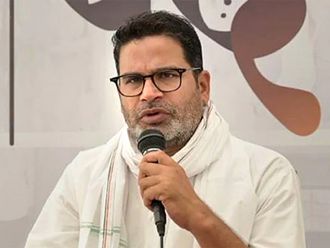We don’t normally look for a deep and personal connection with total strangers, but for the attendees at The Human Connection’s monthly eye-gazing events, that’s exactly what we’re there for. Usually, steel-reinforced personal space bubbles have been punctured and in a corner of the Fitzroy Gardens in Melbourne, people have gathered hoping to take a look through the windows of another’s soul.
A group of assorted people — many in festival gear, but plenty in unremarkable Saturday wear — are sitting cross-legged on the grass. The drill is simple: Find someone sitting alone, sit opposite them, gaze silently into each other’s eyes for as long as you feel like it, then chat.
Over the course of three hours, I gaze into the eyes of 11 strangers. Some are meditative and peaceful. Some are nervous. Some can’t stop giggling or pulling faces. Some engage in the activity as if it is a staring contest. Some list gently to one side.
For me, it’s mostly quite calming; less challenging and less intense than expected. Several of my gazes are ended by a blowfly flying up my nose, and one by a ringtail possum crashing down out of a palm tree. In the park, the conversation flows freely and the post-gaze chats are probably the best bit. It’s easy to talk to someone you’ve just stared at for three minutes straight. The awkwardness has burned off already.
Most of the participants are new to eye-gazing, but everyone there is looking for different versions of the same thing: Human connection. A few are taking part in an effort to come out of a shell. Some are looking for meaningful interaction.
There’s a lot of mention of the superficial nature of modern digital life and social media, though ironically, everyone present heard about the event through Facebook. The Human Connection’s founder, Ivan Kreyman, tells me the movement has snowballed since it began last year. “We started off with Sydney, and we had 150 people come to the first event in April, and then in May we had 300 people, so we decided to try Melbourne, then Adelaide, Brisbane, Canberra, Wollongong and Sunshine Coast are in the process — and we have events in LA [Los Angeles] and Mumbai then New Zealand. We’re growing quite rapidly.”
“One of the most memorable experiences was when an Asian lady in her 40s or 50s came through. She didn’t know about the event, had her grocery shopping bags with her. She asked what was happening, and we said, “It’s a form of meditation, would you like to try it?” She sat down and kept asking, “What do we do now?”
“She had very specific ideas and settled values, but watching her let go and go deeper into the experience was amazing. Afterwards, she told me, ‘You’re like an airport — you hold a lot of space for all the planes’.”
Psychoanalytic philosophers such as Lacan and Zizek explored the idea of “gaze” — the paradox being that the only thing you can never see properly is yourself. Many animals, including bears, chimps, dogs and cats, regard eye contact as an act of dominance. Many cultures regard it the same way and avoid it when interacting with a superior. While westerners generally regard it as a sign of respect, trust, truthfulness and strength, it’s still confronting, and holding a gaze is usually the province of romantic relationships.
In Hindu practice, Darshan — literally, “seeing” — includes gazing into the eyes of a holy person, and being seen in return. Eye-gazing is a meditative practice in Buddhism, Sufism and Tantra. The original “look into my eyes” hypnotist, Franz Mesmer, treated patients with intense eye contact. In fact, in 1989, researcher Joan Kellerman and her team linked eye-gazing to increased interpersonal attraction
Whatever the origins of the movement, and whatever your personal experience of the process, it’s clear that eye-gazing is an undeniable shortcut to human connection — something most of us could always use a little more of.
— Guardian News & Media Ltd
Nicole Eckersley is a Melbourne-based writer, editor and reviewer.










